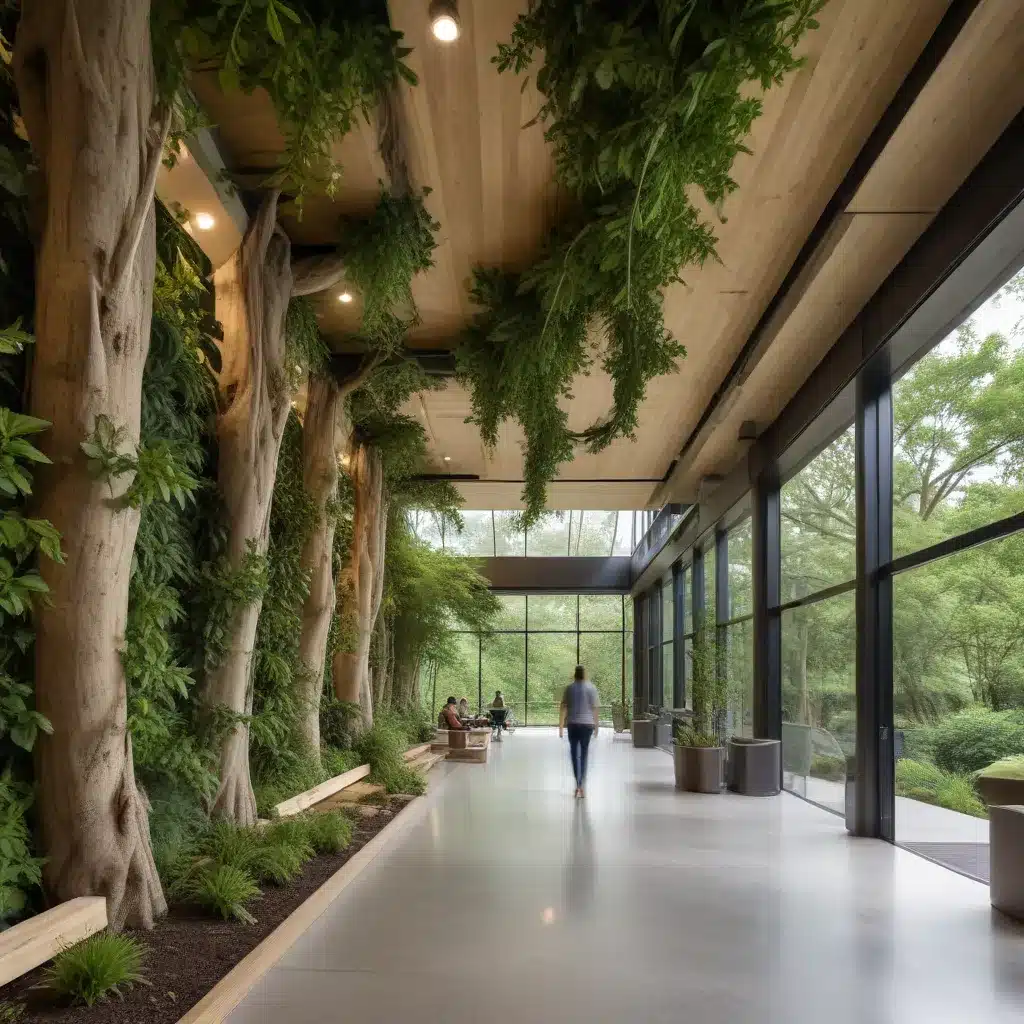
In an era marked by rapid urbanization and the ever-increasing disconnect between humans and the natural world, a transformative design philosophy has emerged: Biophilic Design. This holistic approach seeks to bridge the gap, weaving the essence of nature into the very fabric of our living spaces. As we step into the year 2024, TriCounty Tree Care is proud to guide you through the captivating realm of Biophilic Bliss, where the built environment and the natural world coexist in harmonious symphony.
Defining Biophilia
At the heart of Biophilic Design lies the concept of Biophilia, a term coined by renowned biologist E.O. Wilson. Biophilia refers to the innate human tendency to seek connections with nature, driven by our deep-rooted evolutionary affinity for the natural world. This intrinsic bond shapes our physical, emotional, and cognitive well-being, influencing how we interact with and perceive our surroundings.
Elements of Biophilic Design
Biophilic Design encompasses a diverse array of elements that work in tandem to foster a seamless integration of nature into the built environment. These include:
- Natural Materials: The use of organic materials such as wood, stone, and natural fibers to create a tactile connection with the natural world.
- Abundant Natural Light: Strategically placed windows, skylights, and reflective surfaces that maximize the penetration of natural daylight.
- Incorporation of Vegetation: The integration of lush indoor plants, living walls, and verdant landscapes to bring the outdoors in.
- Biomorphic Forms: Shapes and patterns inspired by the natural world, evoking a sense of familiarity and comfort.
- Sensory Stimulation: The integration of elements that engage the senses, such as the sound of water, the scent of plants, or the tactile qualities of materials.
Benefits of Biophilic Environments
The advantages of Biophilic Design extend far beyond the realm of aesthetics. By fostering a connection between the built environment and the natural world, Biophilic Design has been shown to deliver a multitude of benefits:
- Improved Physical and Mental Well-being: Studies have demonstrated that exposure to nature can reduce stress, enhance mood, and promote overall health and vitality.
- Increased Cognitive Performance: Biophilic environments have been linked to improved concentration, creativity, and problem-solving abilities.
- Enhanced Productivity and Focus: The calming influence of nature has been shown to boost productivity and reduce absenteeism in workplace settings.
- Strengthened Connection to the Environment: Biophilic Design cultivates a deeper appreciation and respect for the natural world, encouraging sustainable practices and environmental stewardship.
Integrating Nature into the Built Environment
Embracing Biophilic Bliss in the built environment requires a multifaceted approach that seamlessly merges architectural, landscape, and interior design elements. At TriCounty Tree Care, we believe in the transformative power of this holistic design philosophy.
Architectural Approaches
Biophilic Design principles can be woven into the very fabric of a building’s structure, creating a seamless connection between the indoor and outdoor realms. This may involve the strategic placement of windows, the incorporation of atriums or courtyards, and the use of natural materials that evoke a sense of warmth and harmony.
Landscape Integration
The surrounding landscape plays a crucial role in Biophilic Design, serving as an extension of the indoor environment. By thoughtfully integrating native plant species, water features, and meandering pathways, designers can create a cohesive outdoor experience that complements the interior spaces.
Incorporating Biophilic Elements
Within the interior spaces, Biophilic Design shines through the incorporation of natural elements, such as lush greenery, natural lighting, and organic textures. These elements work together to create a sense of calm, rejuvenation, and connection to the natural world.
Sustainable Biophilic Practices
Biophilic Design goes beyond mere aesthetics; it embraces principles of sustainability and environmental stewardship. By thoughtfully integrating nature into the built environment, TriCounty Tree Care advocates for design solutions that are not only visually captivating but also ecologically responsible.
Resource-Efficient Strategies
Biophilic Design leverages the inherent benefits of natural systems, reducing the reliance on energy-intensive systems and promoting resource efficiency. This may include the use of passive cooling and heating techniques, water conservation strategies, and the selection of sustainable building materials.
Maintenance Considerations
Integrating living elements, such as indoor plants and water features, requires careful planning and ongoing maintenance. TriCounty Tree Care works closely with clients to develop tailored maintenance protocols, ensuring the long-term vibrancy and sustainability of Biophilic Design elements.
Promoting Biodiversity
By incorporating native plant species and creating habitats for local fauna, Biophilic Design can contribute to the preservation and enhancement of biodiversity within the built environment. This not only enriches the visual landscape but also supports the delicate ecological balance of the surrounding ecosystem.
Psychological and Physiological Impacts
The influence of Biophilic Design extends far beyond the realm of aesthetics, profoundly impacting the psychological and physiological well-being of those who experience it.
Human-Nature Connections
Biophilic Design nurtures a deep connection between humans and the natural world, tapping into our evolutionary predisposition to seek solace and rejuvenation in nature. This connection fosters a sense of belonging, grounding, and overall life satisfaction.
Stress Reduction and Wellbeing
Numerous studies have demonstrated the stress-reducing and mood-enhancing effects of exposure to natural elements. Biophilic Design harnesses these benefits, creating restorative environments that promote relaxation, mental clarity, and improved physical health.
Cognitive and Productivity Enhancements
The integration of Biophilic Design principles has been linked to enhanced cognitive performance, including improved concentration, creativity, and problem-solving abilities. In work environments, these benefits translate to increased productivity and reduced absenteeism.
As we embrace the year 2024, TriCounty Tree Care invites you to embark on a journey of Biophilic Bliss. By seamlessly integrating nature into the built environment, we can create living spaces that not only captivate the senses but also nurture our deep-rooted connection to the natural world. Let us guide you in crafting a sanctuary that celebrates the timeless beauty of the outdoors, fostering a harmonious and rejuvenating lifestyle. Discover the transformative power of Biophilic Design and unlock the full potential of your living spaces.


